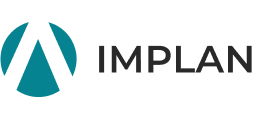Incubating Impacts
The Economic Emergence of the Research Park at the University of Illinois
Introduction
If you’ve never heard of the Research Park at the University of Illinois at Urbana-Champaign, remember the name. It’s a big deal.
Approved in 1999, the Research Park was granted a 200-acre plot adjacent to the University of Illinois’s central campus and opened its first building in 2001. Only two years later, in 2003, the State of Illinois provided additional funding for the park to construct a 43,000-square-foot startup business incubator called EnterpriseWorks. The first tenants of EnterpriseWorks officially moved into the space in early 2004.
Providing a unique environment in which startup tech companies and university faculty and students could operate in a collaborative capacity, the Research Park aimed to further the university’s regional economic development efforts.
Fast-forwarding to 2017, the Research Park is operating at its highest ever level. The park is the largest it’s ever been in every aspect: the number of buildings on the property, the square footage the park covers, the number of companies it hosts, and the number of university faculty and student employees whose collaborations it fosters. On top of that, the future of the Research Park looks to hold even greater leaps in growth than what’s already been experienced.
So, how did the Research Park become so successful? What actions has it taken to encourage such consistent prosperity? While many factors have certainly contributed, in recent years, one practice has proven especially helpful: economic impact analysis.
The Problem
While the Research Park garnered support almost immediately, as evidenced by the land, funding, and encouragement its development effort received early on, its benefits and value, while felt, went largely unmeasured. Though the park continued to add more buildings; nurture more startups; and provide a cohesive, resource-rich environment for all parties; the community-wide value of those benefits was difficult to quantify.
However, publicizing the dollars provided by the private sector, by the university, and by the public sector to fund the project’s construction was far easier.
Relying almost entirely on the trust of the University of Illinois and of the surrounding Urbana-Champaign community for an entire decade, but with few true metrics to show for the impact it knew it was having, the park felt a pressure to make its value known. Yes, it could publicize the continually growing number of startups hosted, buildings added, student employees hired, and more, but what exactly did those numbers show? What sorts of benefits were existing independent businesses and other economic entities throughout the community experiencing? Why should they support county spending going to the Research Park or become a local proponent of the park’s success themselves?
From the park’s perspective…the heat was on.
And understandably so. It wanted nothing more than to be able to turn around and provide the public, and all contributing parties, with metrics which revealed returns that were just as impressive as their initial contributions. The need for objective, data-devised evidence of the park’s value in terms of both dollars and jobs grew increasingly urgent with each new year of operations. This is where economic impact analysis really entered the picture.
The Solution
In 2011, after ten years of operations, the Research Park decided to perform an economic impact analysis to gain a data-backed understanding of its role in supporting the local economy.
The location of the Research Park, in Champaign County, Illinois, made measuring its economic value to the region particularly interesting given the abundance of farmland surrounding the university and the scarcity of other large economic contributors in the area. From informing citizens of Champaign County and the areas surrounding the campus, to incentivizing state & local legislators, the park knew that publicizing the degree to which the local economy relied on it held the potential to open doors for growth that had previously remained closed.
Using regional economic data and an analytical software tool from IMPLAN, the worldwide leader in automated input-output modeling, the Research Park was able to input all of its known costs of construction, operations, employee compensation, and more, over the course of its 10-year presence and quantify the local economic activity it had stimulated during that time. Having known that its contributions were valuable all along, the combination of IMPLAN’s economic data and software were able to actually put proof in the park’s hands.
The Results
The results of the Research Park’s study were staggering. Its findings finally revealed what the park had been specifically contributing to the local economy and workforce over the previous decade.
The study separated the park’s impacts into two main categories: Construction and Operations.
IMPACTS OF INVESTMENTS IN INFRASTRUCTURE AND CONSTRUCTION
The study found that, since 2001, the University of Illinois has invested over $100 million in the Research Park’s infrastructure and in the construction of its facilities. Of that $100+ million investment, the study estimated that…
- 889 jobs were directly created in the region.
- 636 jobs were indirectly created or induced throughout the region.
The study then approximated that the 1,525 jobs attributed to that $100+ million investment, combined with the costs of necessary construction materials, contributed nearly $160 million of total economic output to the local economy.
The study estimated nearly $7.5 million in state tax revenue to have been generated by the construction efforts, while another $2.1 million was estimated to have been generated for Champaign County alone.
The study also revealed that wages directly attributable to the 10 years of continued construction efforts throughout the park totaled almost $45 million and averaged over $48,000 in compensation per worker. The study then measured an additional $23 million in indirect and induced wages throughout the local economy as being attributable to those efforts.
Finally, the study revealed five additional counties in the surrounding region of the economic model—Douglas County, Ford County, Iroquois County, Piatt County, and Vermillion County—as having experienced a $30,000 increase in generated wages thanks to indirect and induced jobs attributable to the activity within Champaign County.
Since it took up residence in the Research Park, Yahoo! has become one of the largest employers in the park, employing more than 90 full-time staff members. The quality and consistency of the region’s professional workforce is one reason why Yahoo! continues making strong and committed investments in the Champaign location, regardless of its distance from the California headquarters.
IMPACTS OF THE PARK’S OPERATIONS
In addition to the impacts of investments in construction and infrastructure, the study analyzed the impacts of the Research Park’s combined 1,235 full- and part-time employees, even quantifying dollars attributable to specific functions throughout the park’s collection of employees.
The breakdown of the park’s 1,235 combined employees revealed…
- 963 employees in Professional and Technical Services.
- 151 employees in Educational Services.
- 121 employees in Accommodations.
- 241 indirect jobs created throughout the region.
- 508 induced jobs created throughout the region.
The study found the annual payroll of the Research Park to be $54,503,179, which contributed an economic benefit of over $100 million locally, while indirect and induced jobs contributed an additional impact of over $68 million.
The study estimated that, since 2001, the park’s operations yielded over $4 million in state tax revenue, nearly $1.5 million in tax revenue for Champaign County, and over $25,000 in taxes for the economic model’s surrounding five counties: Douglas County, Ford County, Iroquois County, Piatt County, and Vermillion County.
Finally, the study revealed that the park’s 10 years of operations had ultimately…
- created a total of 1,983 combined direct, indirect, and induced jobs throughout the region across both full-time employees and part-time student employees.
- generated $81,220,179 of combined direct, indirect, and induced wages across both full-time employees and part-time student employees.
- generated $169,549,000 of combined direct, indirect, and induced economic output across both full-time employees and part-time student employees.
So, armed with these figures, the Research Park demonstrated its value to the community and continued operating successfully, right? Well, yes…but that’s so not the whole story. The first study was just the turning point.
· · ·
The follow-up study in 2015 really drove the point home.










